NASA says there is no evidence UFOs have alien origins
Harvard Professor Avi Loeb on the questions surrounding UFOs after NASA claims there is no connection to aliens
For the first time in U.S. history, samples from an asteroid in deep space that were captured by NASA fell to Earth and landed in the Utah desert on Sunday, ending a seven-year journey.
The Osiris-Rex spacecraft flew by Earth on Sunday morning, releasing a capsule containing the sample, from nearly 63,000 miles away. Four hours later, the capsule landed on a stretch of military land as the Osiris-Rex spacecraft embarked on a journey to chase after another asteroid.
"We have touchdown!" Mission Recovery Operations announced, immediately repeating the news since the landing occurred three minutes early. Officials later said the orange striped parachute opened four times higher than anticipated — around 20,000 feet (6,100 meters) — basing it on the deceleration rate.
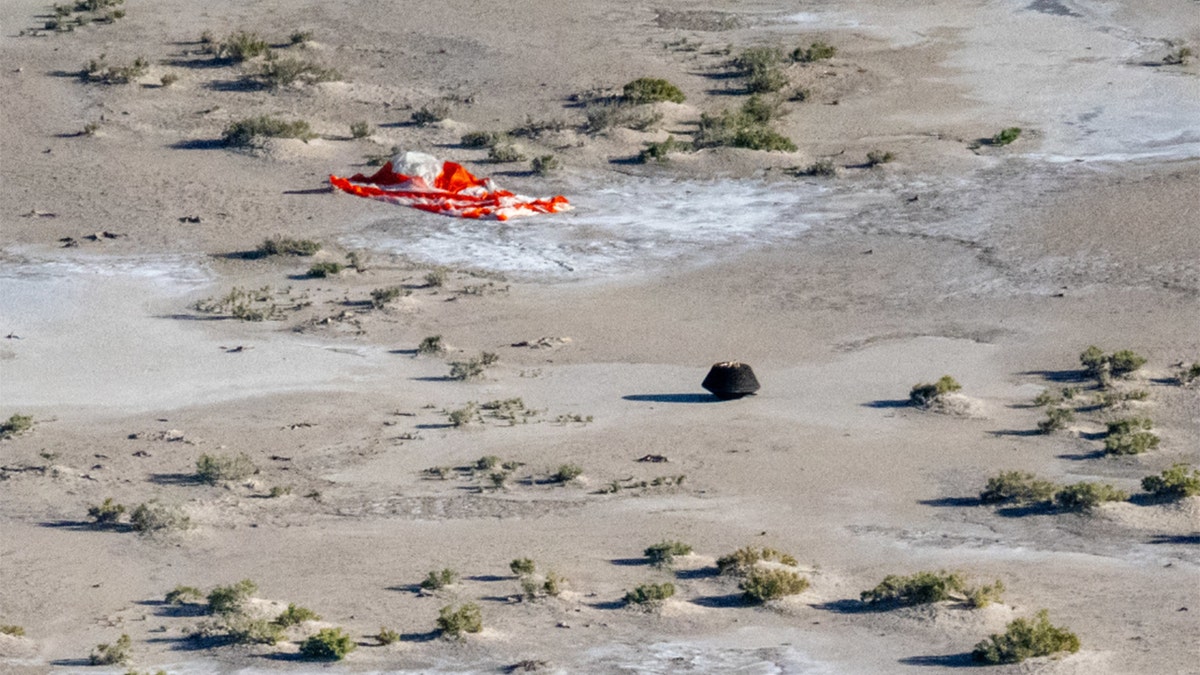
The sample return capsule from NASA’s OSIRIS-REx mission is seen shortly after touching down in the desert, Sunday, Sept. 24, 2023, at the Department of Defenses Utah Test and Training Range. The sample was collected from the asteroid Bennu in October 2020 by NASA’s OSIRIS-REx spacecraft. (Photo Credit: NASA/Keegan Barber)
NASA said on its website that radar data from the property where the capsule was expected to land, confirmed the space package entered the atmosphere at 10:42 a.m. off the coast of California, as planned.
Then, the drogue parachute, which is the smaller of two onboard, opened after the capsule entered the atmosphere to help with stability, before separating from the capsule.
The main parachute deployed at 10:47 a.m., slowing the capsule down from hypersonic speed to 11 mph before it touched the ground.
VIDEOS CAPTURE FIREBALL METEOR LIGHTING UP COLORADO'S EARLY MORNING SKIES
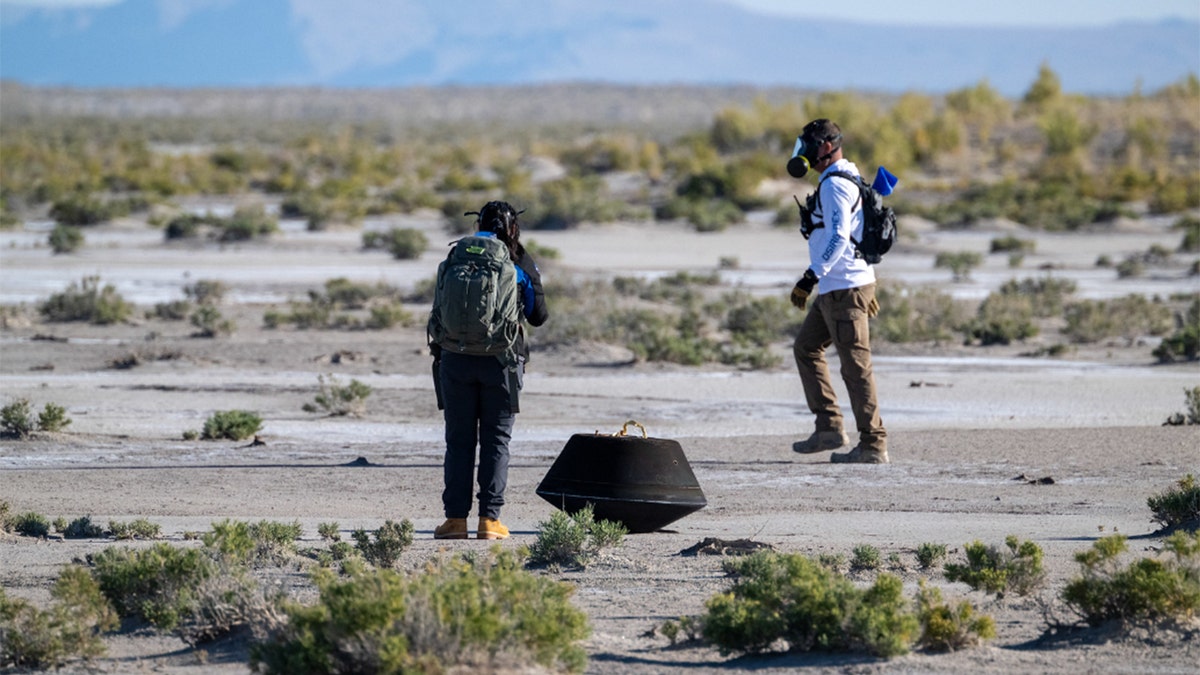
Lockheed Martin System Safety Engineer Victoria Thiem, left, and On Scene Commander of Recovery Stuart Wylie, right, perform preliminary checks on the sample return capsule from NASA’s OSIRIS-REx mission, Sunday, Sept. 24, 2023, shortly after the capsule landed at the Department of Defense's Utah Test and Training Range. The sample was collected from the asteroid Bennu in October 2020 by NASA’s OSIRIS-REx spacecraft. (Photo Credit: NASA/Keegan Barber)
A major concern after touching down was ensuring the contents did not become contaminated.
To NASA's relief, the capsule did not appear to be breached when it was recovered, and the 4.5-billion-year-old samples were free of contamination.
Two hours after landing, the capsule was in a temporary clean room at the Defense Department’s Utah Text and Training Range after being carried by a helicopter.
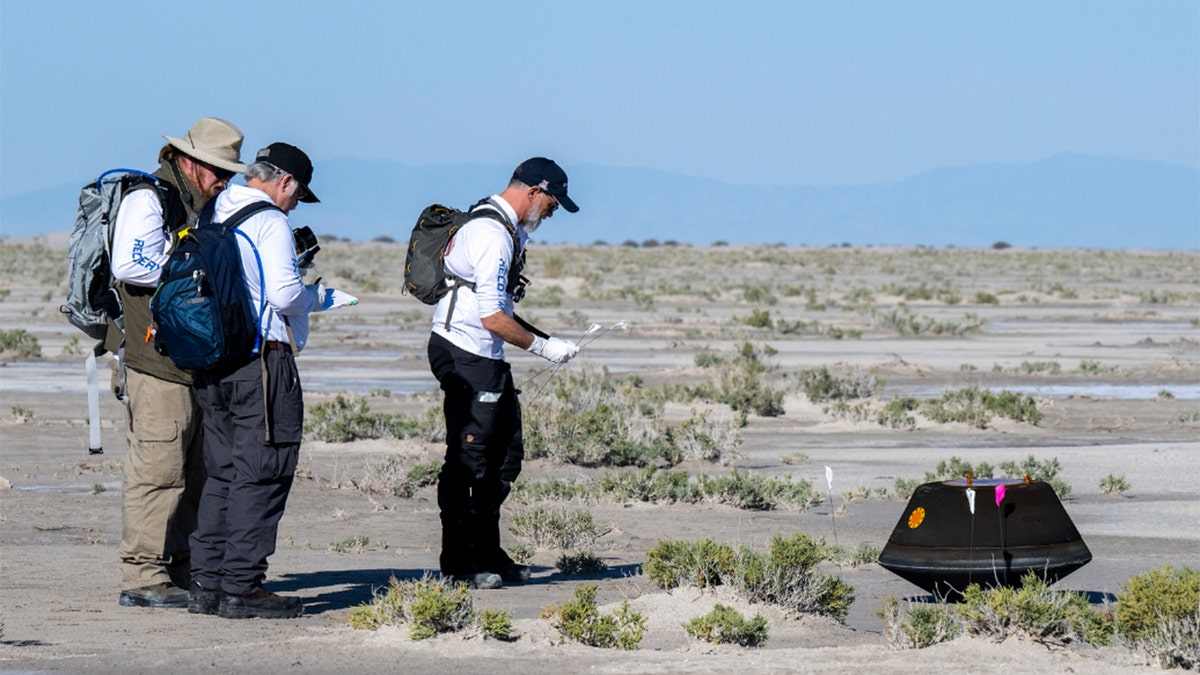
From left to right, NASA Astromaterials Curator Francis McCubbin, NASA Sample Return Capsule Science Lead Scott Sandford, and University of Arizona OSIRIS-REx Principal Investigator Dante Lauretta, collect science data, Sunday, Sept. 24, 2023, shortly after the sample return capsule from NASA’s OSIRIS-REx mission landed at the Department of Defense's Utah Test and Training Range. The sample was collected from the asteroid Bennu in October 2020 by NASA’s OSIRIS-REx spacecraft. (Photo Credit: NASA/Keegan Barber)
"It’s like ‘Wow!’" NASA astronaut Sunita Williams, who was in Utah training for her own space capsule mission, said. "This is just amazing. It can go from the movies, but this is reality."
The capsule holds roughly a cup of rubble from the asteroid known as Bennu, which is supposedly carbon-rich. Despite how much the capsule can hold, it will not be known for sure until the container is opened in about a day or two.
Some of the material scooped up during the mission three years ago, spilled and floated away after it grabbed too much, jamming the lid.
JOURNALIST PRESENTS MEXICAN CONGRESS WITH ALLEGED ‘NON-HUMAN ALIEN CORPSES’ AT UFO HEARING
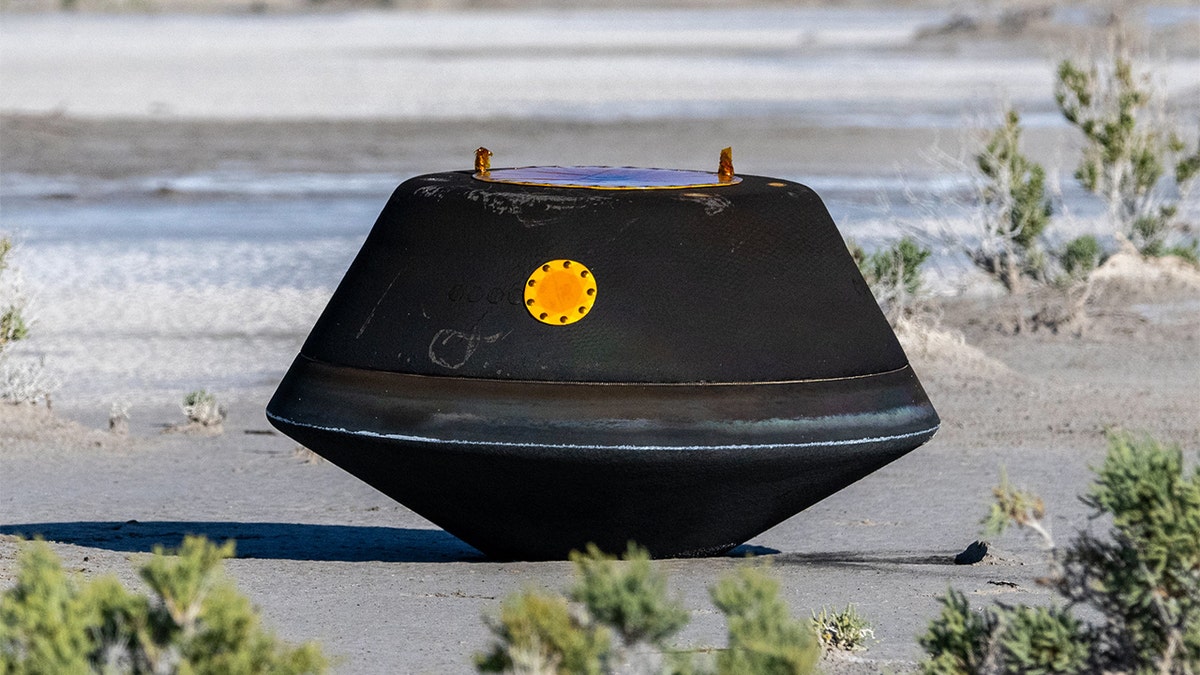
The sample return capsule from NASA’s OSIRIS-REx mission is seen shortly after touching down in the desert, Sunday, Sept. 24, 2023, at the Department of Defense's Utah Test and Training Range. The sample was collected from the asteroid Bennu in October 2020 by NASA’s OSIRIS-REx spacecraft. (Photo Credit: NASA/Keegan Barber)
Japan is the only other country to get samples from an asteroid. In fact, the country has been able to collect about a teaspoon during a pair of asteroid missions.
NASA’s haul on Sunday is the biggest to be retrieved from an object further than the moon.
Osiris-Rex blasted off into space in 2016, marking the beginning of a $1 billion mission.
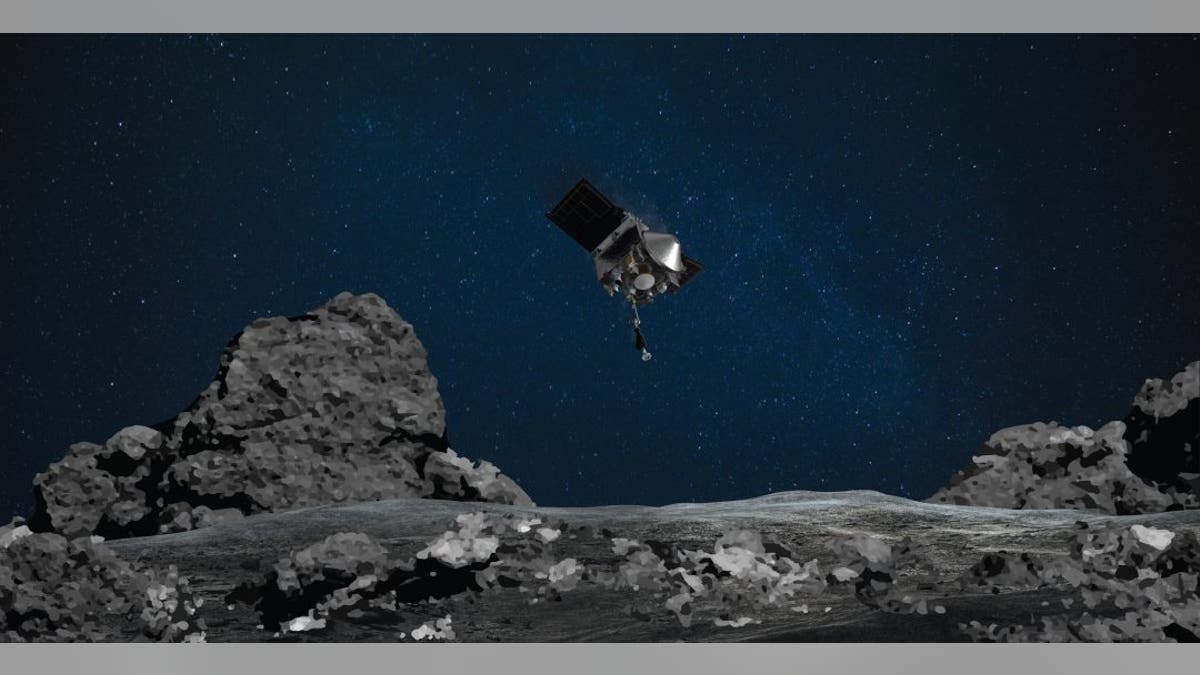
This illustration shows NASA’s OSIRIS-REx spacecraft descending towards asteroid Bennu to collect a sample of the asteroid’s surface. (Credits: NASA/Goddard/University of Arizona)
The spaceship reached Bennu two years later and used a long stick vacuum to material from the small space rock. Once it returned to Earth, the mothership had traveled 4 billion miles.
The samples will be flown Monday morning to a new lab at NASA’s Johnson Space Center in Houston. The building already houses the hundreds of pounds (kilograms) of moon rocks gathered by the Apollo astronauts.
CLICK HERE TO GET THE FOX NEWS APP
It will take a few weeks to get a precise measurement, said NASA’s lead curator Nicole Lunning.
NASA plans a public show-and-tell in October.
The Associated Press contributed to this report.






















